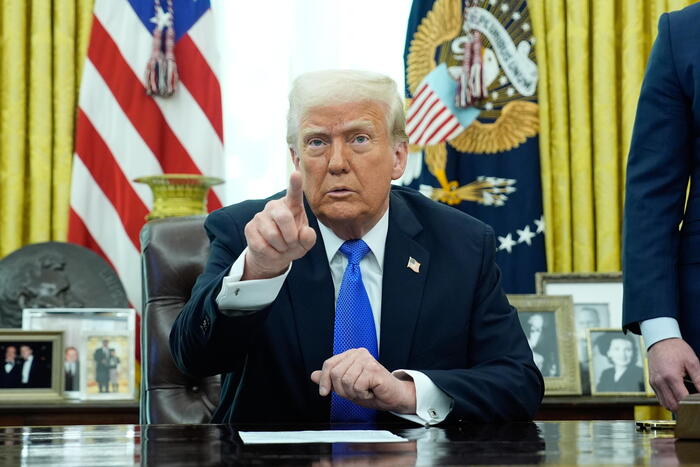Donald Trump issued an executive order on Tuesday titled “Preserving and Protecting the Integrity of American Elections,” which enacts sweeping changes to the election process that advocates and experts say amounts to an executive-branch power grab that could disenfranchise millions of eligible voters.
The order dictates that a great deal of action be taken through the Election Assistance Commission, an independent bipartisan agency created after the disputed 2000 election charged with, among other things, administering payments to states and developing guidance to meet the requirements of the 2002 Help America Vote Act. In Tuesday’s order, the president directs the EAC to take a number of actions, including that it “take all appropriate action to cease providing Federal funds to States that do not comply with the Federal laws.”
While the four EAC commissioners are appointed by the president and go through a Senate confirmation, the agency’s independent status has meant that it is not subject the Oval Office’s direct orders in this manner. “If a President can control the EAC, it could direct the agency to do all kinds of things that could benefit the President’s party,” says Rick Hasen, a professor at the UCLA School of Law and director of the Safeguarding Democracy Project. “It would flout the bipartisan, balanced approached of the EAC.” Hasen adds that such an expansive view of the president’s powers has yet to be sanctioned by the federal judiciary, though some current cases could grant that authority down the line.
Among the changes Trump calls for through the EAC is that the agency alter its national voter registration form to require “documentary proof of citizenship,” which Trump and many Republicans before him have claimed to be a measure meant to curb election fraud. That claim has historically been and remains contentious, as opponents claim that such measures have the effect of disenfranchising elderly, minority and low-income voters. A 2011 study from NYU’s Brennan Center found that 11% of voting-age citizens lack necessary photo ID, and that many in rural areas face challenges accessing offices to obtain one. Over 30 states already have such laws on the books, despite studies showing that the occurrence of voter fraud is vanishingly small, around one in ten million over multiple elections. “The aim here is voter suppression pure and simple,” says Hasen.
Another portion of the order directs the Department of Homeland Security to “review each State’s publicly available voter registration list and available records concerning voter list maintenance activities” in collaboration with the head of DOGE, “including through subpoena where necessary.” DOGE has not proven to be capable of the analysis Trump proposes they carry out, as the agency’s claims of fraud found in the Social Security system have proven to be totally baseless. It also remains to be seen how much states will cooperate with the Trump administration in this regard, as the Pence-Kobach commission in Trump’s first term (which was charged with finding voter fraud and found none) received a lot of pushback from states to turn over such records. Amy Gleason, DOGE’s ostensive administrator, has been conspicuously absent from the public eye, despite the agency’s wide-ranging activities in the opening months of Trump’s second term.
Activists and advocates are already organizing against the Trump administration over the order. Democratic election lawyer Marc Elias, who was targeted in another Trump executive order days ago addressing “abuses of the legal system,” issued a statement on social media declaring that he will be suing over the order, as will the ACLU. Others, like Arizona Secretary of State Adrian Fontes, see a very sinister endgame beyond its stated scope. “I genuinely believe that the Trump administration wants to cancel the 2026 elections so that he and his party can stay in power,” he said in an interview with Democracy Docket, a media outlet founded by Elias. “And we have to fight like hell against that by every means available.”












